how to use a flash drive
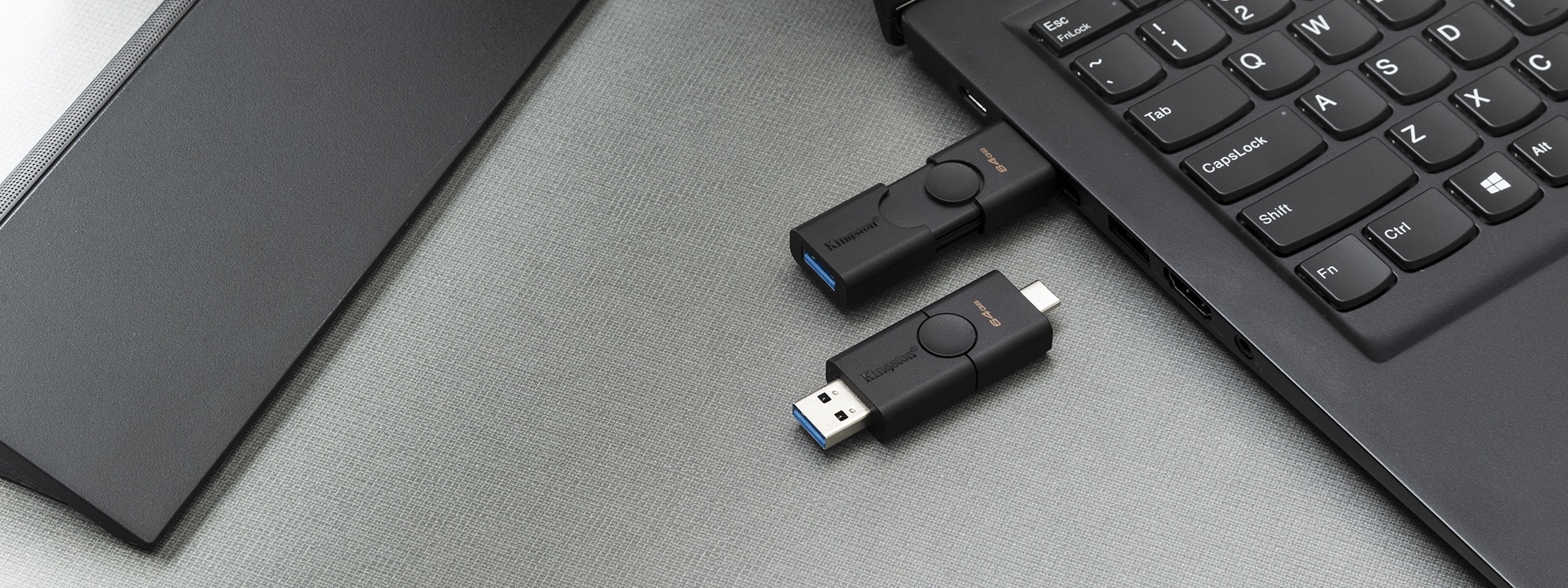
What is a USB drive?
A USB drive, also referred to as a flash drive or memory stick, is a small, portable device that plugs into the USB port on your computer. USB drives are commonly used for storage, data backup, and transferring files between devices. USB drives come in multiple storage capacities and different ports, each having a unique shape. Using a USB drive can differ depending on the type of computer that you want to connect to. Keep reading to learn how to use a USB drive on Windows.
Is my USB drive compatible with my computer?
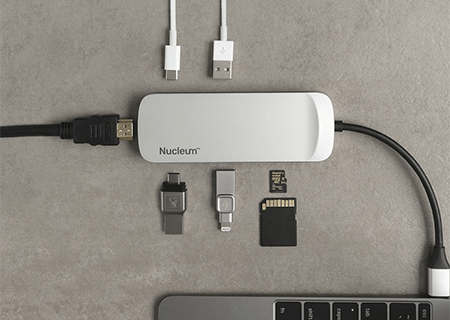
If you are using your USB drive for the first time, it's important to check that your USB drive is compatible with the USB ports on your computer. Most people would recognise the USB-A, the large, square-shaped USB drive which can only be plugged in one way. However, the latest Windows computers are starting to replace the USB-A port with a smaller, slimmer alternative USB-C port.
If your Windows computer only has a USB-C port, but your USB drive is a USB-A type drive, then you can either purchase a USB-A to USB-C adapter, or for a small expense, you could buy a new USB-C drive.
How to insert the USB drive?
Once you have a USB drive that is compatible with your Windows computer, you can now insert the drive into a USB port. The ports will typically be located on the side of a laptop and either the front or back of a desktop. If you are using a USB-A, please make sure you insert the USB drive the correct way to prevent any damages to your computer.
The first time you insert the USB drive, Windows will install the necessary driver software in order to use the USB drive. Next, a dialog box should appear. Select 'Open folder to view files.' If a dialog box does not appear, it can be fixed by inserting the USB drive again or by opening File Explorer and selecting your USB drive.
How do you format a USB drive on Windows 10?
Most USB flash drives will be preformatted. If the drive is 32GB or less they will be in the FAT32 file system. If they are larger than 32GB (for Kingston's USB flash drive capacity groups, this would be our 64GB capacities or higher) they will be in the exFAT file system. FAT32 is limited to a maximum of a 32GB storage volume, so it will not have the option to format it in this file system on any storage drives larger than this.
After you plug your USB flash drive into your computer you are ready to copy and move files, format, or rename the drive. You can rename the drive by opening File Explorer and clicking on 'This PC' from the left pane. Then right click your USB drive and select rename. NTFS is the standard format for a Windows boot drive but external Windows exFAT or FAT32 allows you to use the USB drive on both Mac and Windows computers. You might want to keep the drive in exFAT or FAT32 so they will work with a Mac, however you can also format them into the NTFS file system. To format to NTFS open File Explorer and click on 'This PC' from the left pane. Then right click your USB drive and select format and NTFS but note that any data on the drive will be erased, so make sure you already have another copy.
If the USB flash drive was formatted for a Mac (AFS+) but you want to use it on a PC, you must format it into the exFAT, FAT32 or NTFS file system, but note that any data on the drive will be erased.
After you have formatted the USB drive it should be ready to go. You can view the contents by opening File Explorer and selecting your USB drive from the list in the left-hand panel.
How can I use the USB drive?
Once you can access the USB drive on your Windows computer, it can now be used like any other folder on your computer.
- You can save documents straight to the USB drive.
- You can copy files to and from the USB drive. (Please note that when copying files, the files will be duplicated).
- You can also remove a file from your USB drive by dragging the file to the trash can. A dialog box should appear. Click yes to confirm that you want to permanently delete this file and free up storage on the USB drive. (If the dialog box doesn't appear automatically; right click on the recycle bin, then properties, and tick the box 'Display delete confirmation dialogue'.)
How to remove the USB drive?
When you have finished using the USB drive, it is important to properly remove the device from the Windows computer, to avoid damaging the files. You can do this either by clicking on the small arrow on the right-hand side of the taskbar, selecting the USB icon, and clicking 'Eject' in the popup menu for your desired USB or by right clicking the USB drive and selecting 'Eject'.
External storage like USB drives and SSDs are a great way to transport your files, backup important documents, and give your Windows computer some extra space to run applications and play games.
#KingstonIsWithYou

How to use your old SSD as an external storage drive
Learn more
-
How to install a 2.5" SSD in a notebook
Step-by-step process on how to install a 2.5" SSD in your notebook.
-
How to install a 2.5" SSD in a desktop
Step-by-step process on how to install a 2.5" SSD in your desktop computer.
-
How to install a M.2 SSD in a notebook
Step-by-step process on how to install a M.2" SSD in your notebook.
-
How to install a M.2 SSD in a desktop
Step-by-step process on how to install a M.2" SSD in your desktop computer.
-

Performance benefits of SSD versus hard disk drive (HDD)
Upgrade to an SSD and your computer will boot up faster, launch apps faster and transfer data faster to save you time.
-

Using a USB drive on a Mac
Copying files to a USB drive on a Mac is easy. Just drag the files from one window to the other. Watch to learn more.
-
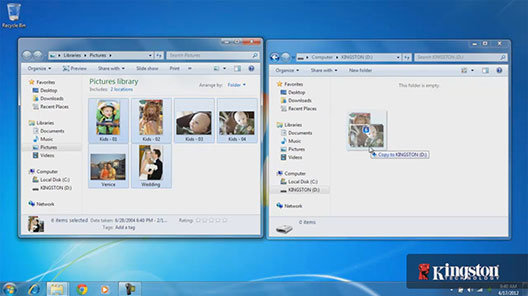
Using a USB drive on a Windows PC
Here's how to get the more from your USB flash drive on a Windows PC. Watch to learn more.
-
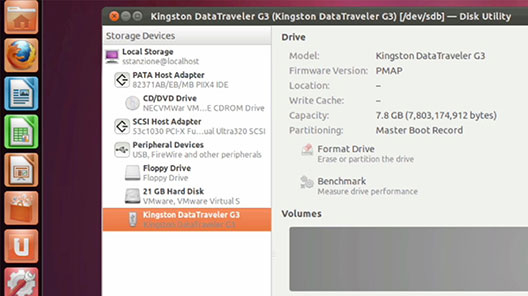
Using a USB drive on Ubuntu Linux
We show you how to copy files to and from a USB flash drive in Ubuntu Linux desktop.
-

- Compact and durable Type-C USB
- USB 3.2 Gen 1 performance
- 32GB, 64GB, 128GB, 256GB
- Up to 200MB/s Read, 60MB/s Write
-

- USB OTG support for smartphones and tablets
- USB 3.2 Gen 1 (USB 3.0)
- 32GB, 64GB, 128GB
- Up to 80MB/s read
-

- USB-C interface for PCs and mobile devices
- USB 3.2 Gen 1 performance
- 32GB, 64GB, 128GB
-

- Business-grade security
- USB 3.1 Gen 1 (USB 3.0)
- 4GB, 8GB, 16GB, 32GB, 64GB, 128GB
- Up to 250MB/s read, 85MB/s write
-

- XTS-AES 256-bit encryption
- USB 3.1 Gen 1 (USB 3.0)
- 4GB, 8GB, 16GB, 32GB, 64GB, 128GB
- Up to 250MB/s read, 85MB/s write
-

- Alphanumeric keypad hardware-based encryption
- USB 3.1 Gen 1 (USB 3.0)
- 4GB, 8GB, 16GB, 32GB, 64GB, 128GB
- Up to 135MB/s read, 40MB/s write
-

- On-device cryptochip
- USB 3.1 Gen 1 (USB 3.0)
- 4GB, 8GB, 16GB, 32GB, 64GB, 128GB
- Up to 230MB/s read, 240MB/s write
- Complex password or passphrase security
-

- Black-on-black sliding cap design
- USB 3.1 Gen 1 (USB 3.0)
- 32GB, 64GB, 128GB, 256GB
- Up to 130MB/s read
-

- Ultra-small, capless design with metal casing
- USB 3.2 Gen 1
- 32GB, 64GB, 128GB
- Up to 100MB/s read
-

- Dual interface USB Type-A and USB Type-C
- USB 3.2 Gen 1
- 32GB, 64GB, 128GB
- Up to 100MB/s read
-

- Automatic USB to cloud back-up
- USB 3.1 Gen 1 (USB 3.0)
- 16GB, 32GB, 64GB, 128GB
- Up to 135MB/s read, 40MB/s write
-

- Colorful loop for key rings
- USB 3.2 Gen 1
- 32GB, 64GB, 128GB, 256GB
-

- Stylish metal casing, capless design
- USB 3.2 Gen 1 performance
- 32GB, 64GB, 128GB, 256GB
- Up to 200MB/s Read, 60MB/s Write
-

- Dual interface supports USB Type-A and USB Type-C
- USB 3.2 Gen 1
- 32GB, 64GB
-

- Advanced level of security
- Available in a Managed model
- 4GB, 8GB, 16GB, 32GB, 64GB, 128GB
- USB 3.1 Gen 1 speeds
-

- High performance Type-C USB
- USB 3.2 Gen 2
- 256GB, 512GB, 1TB
- Up to 1,000MB/s read, 900MB/s write
No products were found matching your selection
-

Don't let old tech go to waste: Recycle your old devices
Electronics donation and recycling is a great way to help conserve resources and natural materials.
-
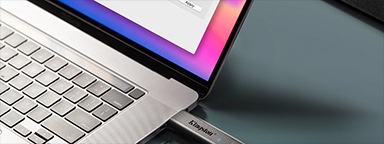
How to format a USB flash drive
We explain how to format a USB flash drive in Windows and on a Mac OS 10+.
-

-

How to setup parental controls on your PC or Mac
Setting parental controls on your computer doesn't have to be complicated, here is how.
-

A Kingston gift guide for STEAM students
Here are some tech gift ideas for the STEAM students in your life.
-
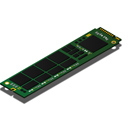
2 Types of M.2 SSDs: SATA and NVMe
There are two types of M.2 SSDs available, which are SATA and NVMe. Learn more about each type.
-
How to install a 2.5" SSD – Kingston Technology
Installing an SSD is easy and can improve the overall speed of your desktop PC or laptop.
-
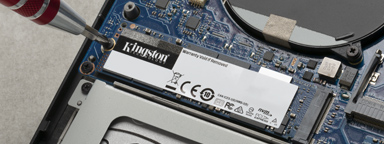
How to install an M.2 PCIe NVMe SSD
This is a step-by-step guide to installing an M.2 SSD into a laptop or desktop PC.
-
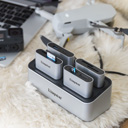
-
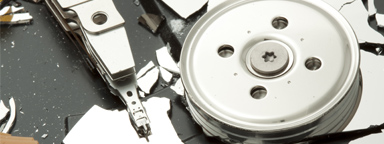
The 5 Benefits of SSDs over Hard Drives
SSDs are more durable, reliable, faster, smaller, lighter, silent and power efficient than traditional hard drives.
-

-

-
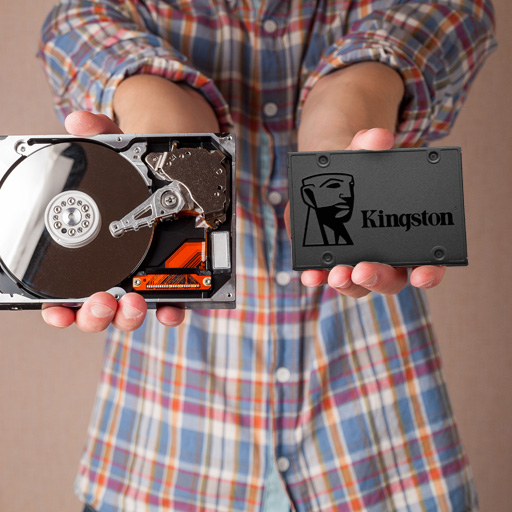
The difference between SSD and HDD
Why should you choose an SSD over an HDD? The main factor is better performance from SSDs.
-

How to choose a memory card for shooting 4K video
Flash memory cards (SD or microSD) for capturing 4K video need to have the right card capacity, write speed, data transfer speed and video speed.
-
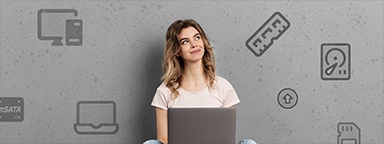
Memory vs Storage: PC Performance
Do you need to upgrade your memory or storage for your desired PC performance?
-
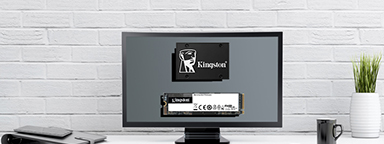
NVMe vs SATA: What is the difference?
NVMe is the new protocol for flash storage while SATA was a hold-over from HDD.
-

How much memory do you need for video editing?
More DRAM means faster PC performance when editing from video, from playback responsiveness to render time. But is 8, 16, 32 or 64GB enough? How much do you need for 1080p, 4K, or 8K?
-
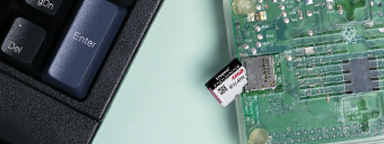
Choosing Storage for Raspberry Pi
What is the best class, capacity and endurance-level microSD card to use with a Raspberry Pi
-
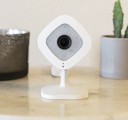
Choosing the right memory card for your security camera
When selecting storage for your security camera, you must consider the memory card's capacity, speed and durability.
-

Understanding the naming conventions and labels of SD and microSD cards
How can a SD or microSD card be rated at both C10 and U3 if one means 10MB/s and the other means 30MB/s? Let us explain.
-

Upgrading your SSD? Upgrade your computer's security too with self-encrypted SSDs
We show you how selecting the right SSD can upgrade both your performance and your security.
-

USB-C explained
USB-C is a small, slim connector. Its symmetrical and reversible shape is what make it popular.
-
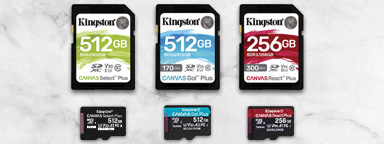
A guide to speed classes for SD and microSD Cards
What does Speed Class C10 mean? What is a UHS Class and V Class? It relates directly to how fast the device needs to write the data.
-
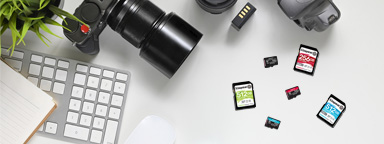
A guide to SD and microSD card types
What is the difference between SDHC and SDXC cards? We help you choose the right card for cameras, drones, phones and more.
-

Using a USB Drive on a Mac
We go over how to use a USB drive, thumb drive, flash drive, pendrive, etc. on a Mac computer.
-

How to select the right memory card for your use
There are many factors in choosing a memory card, such as speed, capacity and device type. We'll help you choose the right card.
-

Choosing a microSD card for your Nintendo Switch
The Nintendo Switch comes with 32GB of internal storage, expandable with a microSD card that will hold more games. But how do you pick a card?
-
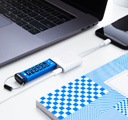
Using an encrypted USB flash drive with an iPhone or iPad
You can read and write to an encrypted USB flash drive with an iPad or iPhone with the right adaptor. Here's how.
-

Choosing microSD cards for your drone adventures
How fast does the write speed and capacity of a microSD card for drones really need to be? And how many cards do you need?
-
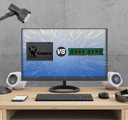
The Difference Between Memory and Storage in Computers
Understand the difference between a storage medium and a system's dynamic random-access memory.
-

7 easy tips to increase productivity while working from home
Having a dedicated workspace, setting priorities and eliminating distractions are just a few ways to increase productivity from home.
-
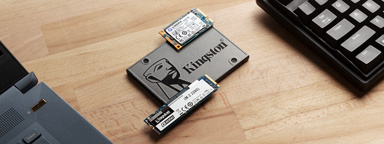
NAND flash technology and solid-state drives (SSDs)
Learn about types of NAND in SSDs like SLC, MLC, TLC, QLC and 3D NAND. What is wear levelling?
-
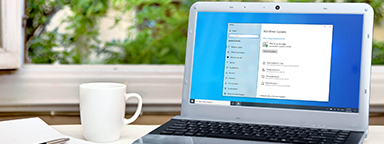
10 ways to speed up a PC running Windows 10
If you're finding that your PC performance is slowing down, these tips can help improve your speeds and PC efficiency.
-
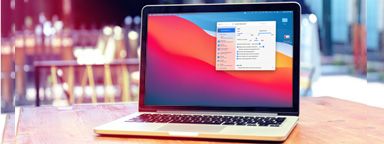
6 Ways to Speed Up Your Mac
There are a few ways to speed up a slow iMac or MacBook that don't require any hardware or software upgrades.
-
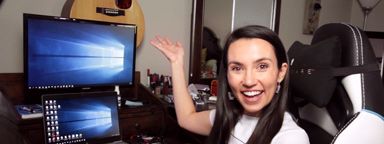
Work From Home Tips and Tricks - Kingston Technology
To work from home you need a good workspace for your PC, the right conferencing gear, and a secure connection.
-
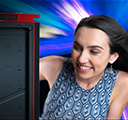
What is NVMe Storage? NVMe Storage Explained
NVMe or Non-Volatile Memory Express is a super-fast way to access non-volatile memory. It can be around 2-7x faster than SATA SSDs. NVMe is designed to have up to 64,000 queues each capable of 64,000 commands at the same time!
-
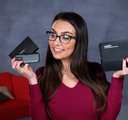
How do you backup your computer? Windows and Mac drive backup
There's a few different ways to backup your Windows and Mac drives and they can be either online or local. We'll show you how.
-

How to use your old SSD as an external storage drive
Have you upgraded your system to a new SSD? Don't scrap the old drive, you can use it as an external storage.
-
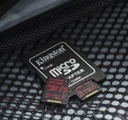
Flash Memory Storage Chart
A chart which shows how many images, videos and files you can store on SSD drives, USB flash drives and flash cards (SD, microSD, and Compact Flash).
-
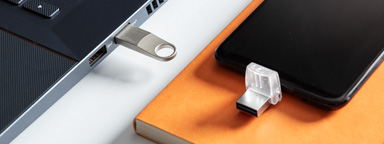
What's the difference between USB 3.1 Gen 1, Gen 2 and USB 3.2?
USB 3.1 Gen 1 supports speeds of up to 5Gbit/s, while USB 3.1 Gen 2 supports speeds of up to 10Gbit/s.
-
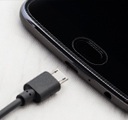
USB OTG Flash Drives - DataTraveler MicroDuo
OTG drives function just like a standard Flash drive and are easier and more convenient than using cloud services.
how to use a flash drive
Source: https://www.kingston.com/en/solutions/mobile-lifestyle/how-to-use-a-usb-drive-on-windows
Posted by: palmersonch1967.blogspot.com

0 Response to "how to use a flash drive"
Post a Comment